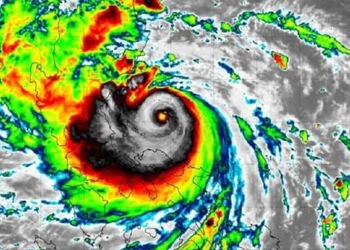The Philippine weather agency has announced that Typhoon Bebinca is moving northward at a speed of 30 km/h and is expected to strengthen into a typhoon by the evening of September 13 (local time).
On September 12, the Philippine Atmospheric, Geophysical and Astronomical Services Administration (PAGASA) reported that Typhoon Bebinca is currently located 1,975 km east of Central Luzon and remains outside the Philippine Area of Responsibility (PAR).
According to Rappler, the typhoon is moving northward at a relatively fast speed of 30 km/h, with sustained winds of 95 km/h and gusts up to 115 km/h. Bebinca is predicted to strengthen into a typhoon by the evening of September 13 (local time).
Bebinca is expected to enter the PAR in the afternoon or evening of September 13 under the local name Ferdie. The typhoon may remain in this area for a few hours and will only pass through waters near the northeastern boundary of the PAR.

Despite being far from the Philippine mainland, Bebinca can still cause heavy rain in many areas.
Meanwhile, the Japan Meteorological Agency reported that as of the evening of September 12 (local time), Bebinca was located east of the Philippines, moving northwest at a speed of about 25 km/h with winds reaching up to 126 km/h.
According to Kyodo, the typhoon is expected to make landfall in the southern part of Okinawa Island and the Amami Islands in southwestern Japan this weekend. Authorities have warned that the 13th typhoon of 2024 could bring strong winds and rough seas to some areas, along with risks of flooding, landslides, storm surges, and rising river levels.
Residents are advised to avoid going outside unless necessary and to stay away from windows while indoors, as strong winds could topple power poles and cause damage to parts of buildings.
Additionally, Bloomberg reports that Typhoon Bebinca is forecasted to make landfall on the eastern coast of China, particularly in coastal areas between Zhejiang and Fujian provinces, early on September 16 (local time).
The National Meteorological Center of China stated that Bebinca, known locally as Beibijia, will make landfall with a storm intensity classified as level 2 on the Saffir-Simpson scale. The typhoon may cause heavy rainfall, potentially impacting oil refineries and LNG import terminals, as well as paralyzing transportation activities.




















































